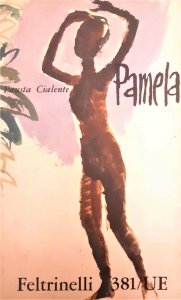Pamela, Ginia and 'la bella estate'. Figures of the artist between Cialente and Pavese
Abstract
The long story Pamela o la bella estate (1935) by Fausta Cialente and the novella La bella estate (1940, published in 1949) by Cesare Pavese share a similar title, as well as a comparable publishing history. Moreover, one can identify a number of formal and thematic correspondences between the two works: both focus on the figure of the artist and his practices as a plot device to build two missed female coming-of-age stories. In Cialente’s and Pavese’s texts the presence of a painter foreshadows the overcoming of social censure and the attempt to affirm new identities and desires. These similarities exalt the artist as a viable cultural symbol, confirming its functionality within profoundly different expressive contexts and intellectual profiles.

Downloads
Published
How to Cite
Issue
Section
License
Copyright (c) 2023 Elephant & Castle

This work is licensed under a Creative Commons Attribution 4.0 International License.





